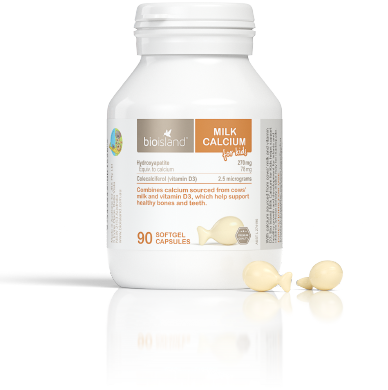
Straining to understand which probiotic strain is for what? A helpful guide to get you started
Some strains work to support the body’s immune system and others help support the digestive tract, the difference is important.
By Bio Island Nutrition Team
If you’ve been looking for probiotic for you or your family, you may be wondering what the very long and hard to pronounce names are on the bottle such as ‘lactobacillus’ or ‘bifidobacterium’. These are the names of broad categories of probiotic bacteria and within each of these categories there are many different species and strains which serve a different purpose within the body. Some strains work to support the body’s immune system and others help support the digestive tract - so it’s important to know what to look for when you are shopping for probiotics.
How to read a probiotic label
At first glance, a probiotic label will look like a bunch of difficult to pronounce words, but these words specify which strains of bacteria are in that particular product. Probiotic strain nomenclature can be broken down into
- Genus
- Species
- Subspecies
Genus refers to the broader category of the bacteria and can be thought of as the strains extended family. An example of the genus is lactobacillus and bifidobacterium. The species of bacteria can be thought of as close family members, with different species such as casei and acidophilus having different applications or purposes. The subspecies refers to the specific strain which makes a big difference to the function of the probiotic. It is important to note that not all manufacturers list the specific strain on the label, and this is something that can help you to identify a better quality brand. The strain is listed as a combination of letters and numbers.
To put it all together as an example using lactobacillus acidophilus LPC-37, Lactobacillus is the strain, acidophilus is the species and LPC-37 is the subspecies.
What is the function of different strains?
With over 500 strains it is better to focus on the most common strains that are included in probiotic supplements.
|
LACTOBACILLUS |
|
|
plantarum |
Shown to be protective against invasion of pathogens and improve immune response. |
|
acidophilus |
Helps to support digestive health, specifically lactose intolerance. Also helps to support the immune system. |
|
gasseri |
Use of this strain is geared towards weight management and has been studied for it’s role in managing obesity. |
|
rhamnosus |
This strain has been shown to be effective at reducing antibiotic-associated diarrhea. |
|
reuteri |
Most commonly given to children and infants and helps in the treatment of diarrhea, atopic dermatitis, allergies, and abdominal pain. |
|
BIFIDOBACTERIUM |
|
|
bifidum |
This strain has been indicated for treatment of Irritable Bowel Syndrome (IBS) and for optimising immune function. |
|
longum |
Research into this strain has shown that it may help to reduce gastrointestinal symptoms and improve immune function by promoting a balanced gut microbiome. |
|
lactis |
Studies into this strain have shown that it may help to improve digestion, lower cholesterol, and help enhance immunity. |
|
infantis |
This strain has been shown to help reduce symptoms of IBS and lower overall inflammation. |
|
breve |
Strains in this species have been shown to help improve symptoms of diarrhea, celiac disease, as well as having an antimicrobial role and protect against harmful pathogens. |
What else should you be looking for?
As well as paying attention to the different types of strains when buying a probiotic, it’s also important to understand the CFU count. CFU stans for ‘Colony-Forming-Units’ and it is important to consider because not all of the organisms present in a probiotic supplement will be able to survive the journey to the gut. When deciding what probiotic to purchase it is best to choose the one that has the highest number of CFU’s to ensure you’re getting the most for your money.
Key takeaways
Although learning about all the different species of probiotics may seem confusing, there is really only a few key things you need to keep in mind.
- Read the different strains and species on the label and make sure you are buying the ones that are indicated for your health condition.
- When reading the strains see if that particular brand includes numbers at the end as this indicates the subspecies and generally points to a better-quality product.
- Look for how many CFU’s are in the product, the higher the better.
- Always choose a trusted brand and make sure you check the storage conditions and expiration dates before purchase.
- Work alongside your healthcare practitioner to make sure nothing you purchase is going to interfere with any other medications you may be taking.
This information does not take into account your personal situation and is general in nature. You should consider whether the information is appropriate for your needs and seek professional medical advice.
Always consult your healthcare professional before taking any supplements or if any concerns arise.




